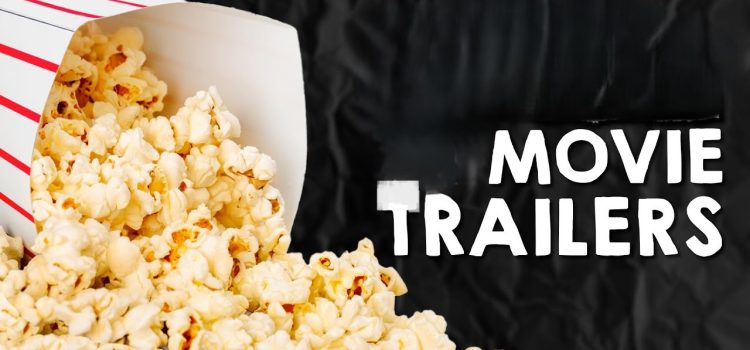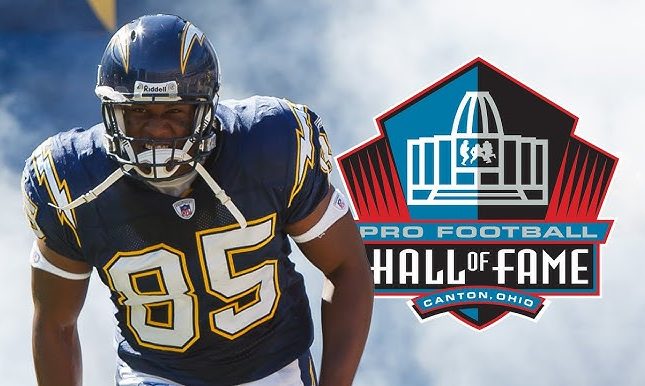
Introduction
The evolution of movie trailers is a fascinating journey that reflects changes in technology, marketing strategies, and audience behavior. From their humble beginnings in the early 20th century to their current dominance on social media platforms, movie trailers have transformed into a vital component of film promotion. This article explores the history, development, and future of movie trailers, highlighting the shift from traditional theater previews to modern social media campaigns.
The Early Days of Movie Trailers
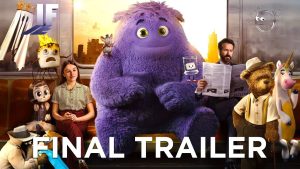
1. The Birth of Trailers
The concept of the movie trailer originated in the early 1900s. Initially, these short promotional films were shown after the main feature, hence the name “trailer.” The first recognized trailer was produced in 1912 for the musical The Pleasure Seekers, which helped set the stage for future marketing strategies in the film industry.
2. The Role of Theaters
For several decades, trailers were primarily confined to movie theaters. They served as a way to entice audiences to return for future films, usually featuring snippets of exciting scenes, actors, and catchy taglines. However, these early trailers were often less polished and lacked the editing techniques we see today.
The Evolution of Trailers in the Television Era

In the mid-20th century, television began to gain popularity, and movie trailers soon found a new home on the small screen. TV spots became the dominant form of movie promotion, often airing during prime time to reach the largest possible audience. These trailers were more refined and polished, featuring high-impact visuals, dynamic music, and voiceovers that could convey the film’s genre and tone.
Television trailers also marked the beginning of targeted marketing. Advertisers started tailoring their trailers to specific audiences based on demographic research, which helped to maximize their impact. Despite this, the reach of television trailers remained limited to those who watched the ads, and many people still relied on word-of-mouth or going to the cinema to get information about new releases.
Benefits of Modern Movie Trailers
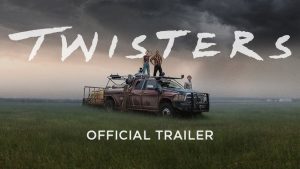
Modern movie trailers give viewers more choices and control over what they watch. With trailers available online and on social media, people can watch them whenever and wherever they want. This freedom has made trailers more accessible, allowing fans to follow updates on their favorite films. Trailers also create excitement before a movie is released, helping fans feel connected and encouraging them to share their excitement with friends and family. Social media has made it easy for trailers to go viral, building even more hype for upcoming films.
The Role of Social Media in Trailers

Social media has changed how trailers are shared and promoted. Platforms like Facebook, Twitter, and TikTok allow trailers to reach specific audiences and engage with viewers directly. With features like comments, likes, and shares, fans can react to trailers, discuss them, and spread the word. Social media also allows for shorter, bite-sized clips that fit modern attention spans, making it easier for trailers to capture interest. Additionally, influencers and celebrities often share trailers, adding to their popularity and reach.
The Transition to Television

1. The Rise of TV Advertising
In the 1950s and 1960s, the advent of television brought about a new platform for trailers. Filmmakers began creating television spots, which allowed them to reach a wider audience. Trailers during this period started to adopt a more structured format, incorporating voiceovers and catchy jingles to grab viewers’ attention.
2. Impact on Audience Engagement
Television trailers allowed for more creative storytelling and engagement with potential audiences. They played a crucial role in establishing a film’s brand and personality. However, the impact of trailers was still limited compared to the digital age, as viewers had to be present during broadcast times to see them.
The Digital Revolution

1. Emergence of Online Trailers
The late 1990s and early 2000s marked the beginning of the digital revolution, changing how trailers were distributed. With the rise of the internet, filmmakers began uploading trailers to websites, allowing audiences to watch them at their convenience. This shift made trailers more accessible than ever before.
2. The Power of YouTube
YouTube emerged as a game-changer for movie trailers. Launched in 2005, it provided a platform for filmmakers to share trailers widely. The ability for users to comment, share, and embed trailers helped create buzz around films and enabled more interactive engagement. This era also saw the rise of teaser trailers, which built anticipation by revealing just enough of the plot without giving everything away.
Social Media and the Trailer Landscape
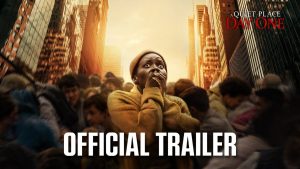
1. The Dominance of Social Media
Today, social media platforms like Facebook, Twitter, Instagram, and TikTok play a crucial role in trailer promotion. Filmmakers can target specific demographics, engaging with audiences on a personal level. The immediacy and shareability of social media allow trailers to go viral, reaching millions of viewers in a short time.
2. Innovative Trailer Formats
Social media has also inspired new trailer formats, such as vertical videos and short teaser clips tailored for platforms like Instagram Stories and TikTok. These formats cater to the shorter attention spans of modern audiences, making them more effective in grabbing attention.
Social Media: The Game Changer for Movie Trailers
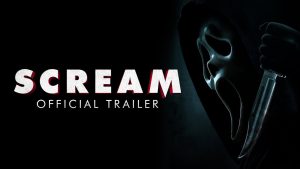
The real transformation in movie trailer distribution came with the rise of social media. Platforms like Facebook, Twitter, Instagram, and later TikTok offered filmmakers direct access to millions of potential viewers. By the 2010s, movie studios began creating tailored trailer campaigns designed to go viral across these platforms.
Here’s how social media reshaped movie trailers:
- Viral Marketing: Movie studios began releasing trailers on platforms like YouTube, where they could be shared instantly by users, turning trailers into viral sensations.
- Targeted Campaigns: Social media allowed studios to tailor trailers to specific demographic groups, enhancing their appeal. For example, a horror film might target young adults, while an animated family movie might aim for children and parents.
- Interactive Content: Social media platforms enabled more interactive forms of content, such as behind-the-scenes footage, interviews with cast members, and fan-driven challenges. This interaction deepened the connection between audiences and films.
- Real-Time Reactions: Platforms like Twitter enabled audiences to react and share their thoughts on trailers immediately after release. This feedback loop influenced marketing strategies and sometimes even a movie’s final cut.
The Impact of Social Media on Trailer Formats
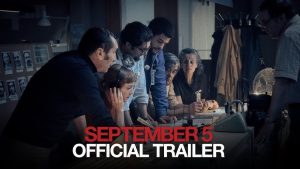
Social media platforms have not only changed where movie trailers are distributed but also how they are structured. As user attention spans grew shorter, movie trailers adapted to keep up. Instead of relying solely on longer formats, filmmakers now produce short, snappy trailers designed for quick consumption.
Here are some of the new trailer formats that emerged due to social media:
- Teasers: Short, suspense-filled clips designed to intrigue rather than reveal too much.
- Social Media Clips: Shorter, platform-specific clips optimized for Facebook, Instagram, and TikTok. These could be as brief as 15 seconds, focusing on key moments from the film.
- Story Highlights: Trailers broken down into multiple shorter videos that highlight specific aspects of the film (action scenes, romantic moments, etc.).
- Live Streaming: Movie studios began live-streaming events, such as trailer releases, to create an immediate sense of excitement and exclusivity.
The Benefits and Challenges of Movie Trailers on Social Media

1. Benefits
- Wider Reach: Social media allows trailers to be seen by a global audience, even in regions where the movie may not yet have been released.
- Engagement: Audiences can comment, share, and interact with trailers in real-time, generating buzz and excitement.
- Cost-Effective: Social media promotions are often more affordable than traditional advertising methods, such as TV spots.
2. Challenges
- Over-saturation: With so many trailers being released daily, it can be difficult for any single trailer to stand out.
- Short Attention Spans: The rise of short-form video content on platforms like TikTok means that trailers must be attention-grabbing within seconds.
- Spoilers: The widespread sharing of trailers means that crucial plot points may be spoiled for viewers before they see the film.
Future of Movie Trailers
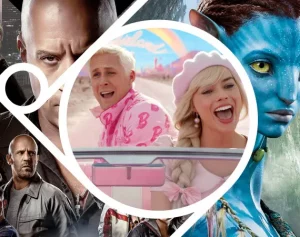
The future of movie trailers looks bright and innovative. New technologies like virtual reality (VR) and augmented reality (AR) may soon become part of the trailer experience, allowing viewers to immerse themselves in the world of the movie. Trailers could become more interactive, letting fans engage with the characters or explore parts of the film’s setting. As streaming platforms and social media continue to grow, movie trailers will keep adapting, finding new ways to connect with audiences and keep them excited for upcoming films.
Analysis of Movie Trailers Through the Ages
| Era | Distribution Method | Key Characteristics | Audience Engagement |
|---|---|---|---|
| Early 1900s | Theaters | Basic scenes from films, shown after the feature | Limited to theatergoers |
| 1950s-60s | Television | Structured format, voiceovers, jingles | Broader reach, scheduled viewing |
| Late 1990s-early 2000s | Internet | Accessible online, increased quality, introduction of teasers | Available anytime, wider reach |
| 2010s-present | Social Media | Short, interactive, viral potential | Highly targeted, immediate feedback |
Comparative Analysis of Traditional vs. Social Media Trailers
| Aspect | Traditional Trailers | Social Media Trailers |
|---|---|---|
| Length | Typically longer (1-3 minutes) | Shorter (15-60 seconds) |
| Audience Reach | Limited to theater or TV viewers | Global, potential for millions |
| Engagement | Passive viewing | Interactive (likes, shares, comments) |
| Marketing Strategy | Focus on cinematic presentation | Viral marketing, tailored content |
| Feedback Mechanism | Delayed box office success | Instant (likes, shares, comments) |
Conclusion
The evolution of movie trailers from traditional theater previews to dynamic social media content illustrates the changing landscape of film marketing. As technology continues to evolve, so too will the ways filmmakers engage audiences. The future of trailers promises to be even more innovative and interactive, ensuring that they remain an essential tool in the film industry.








